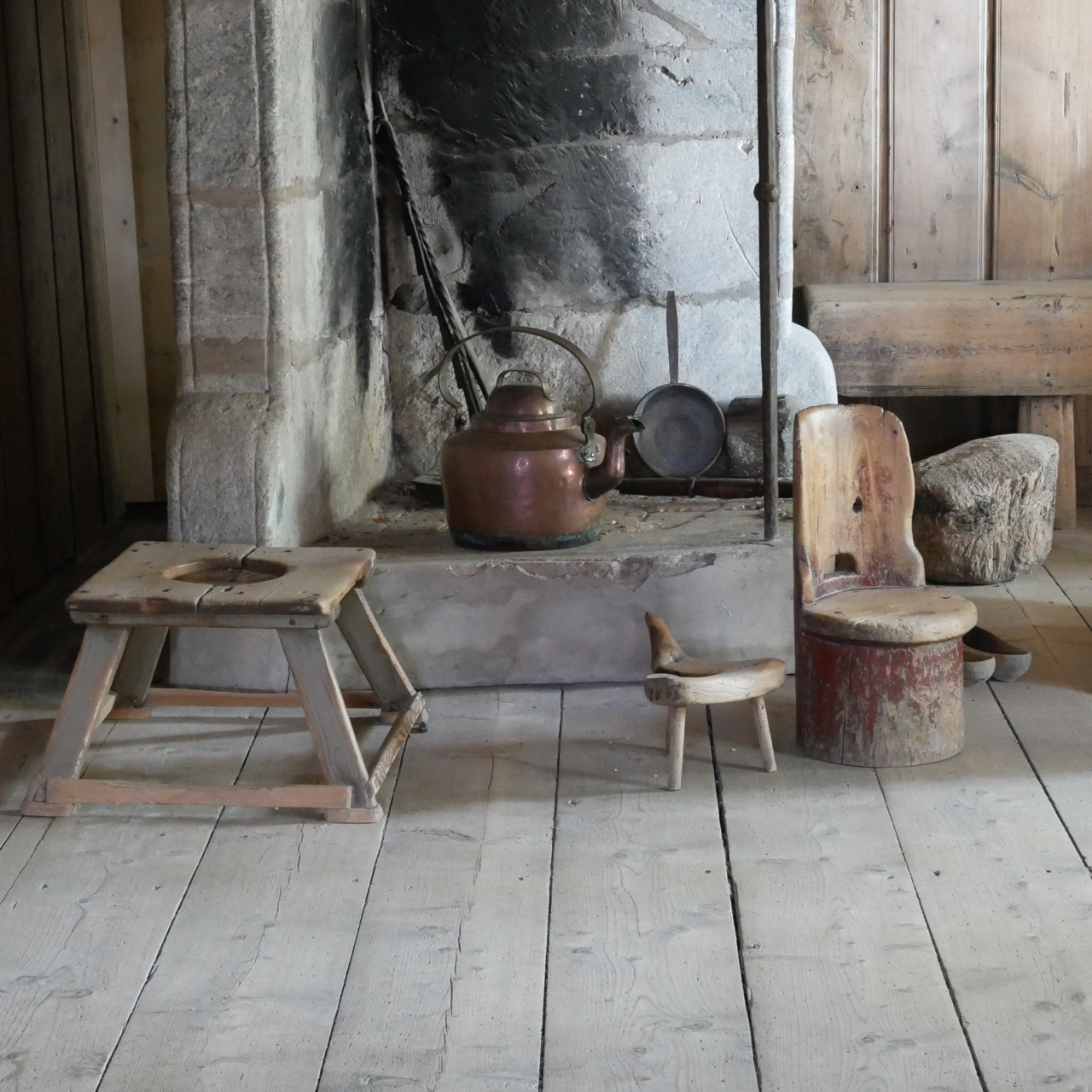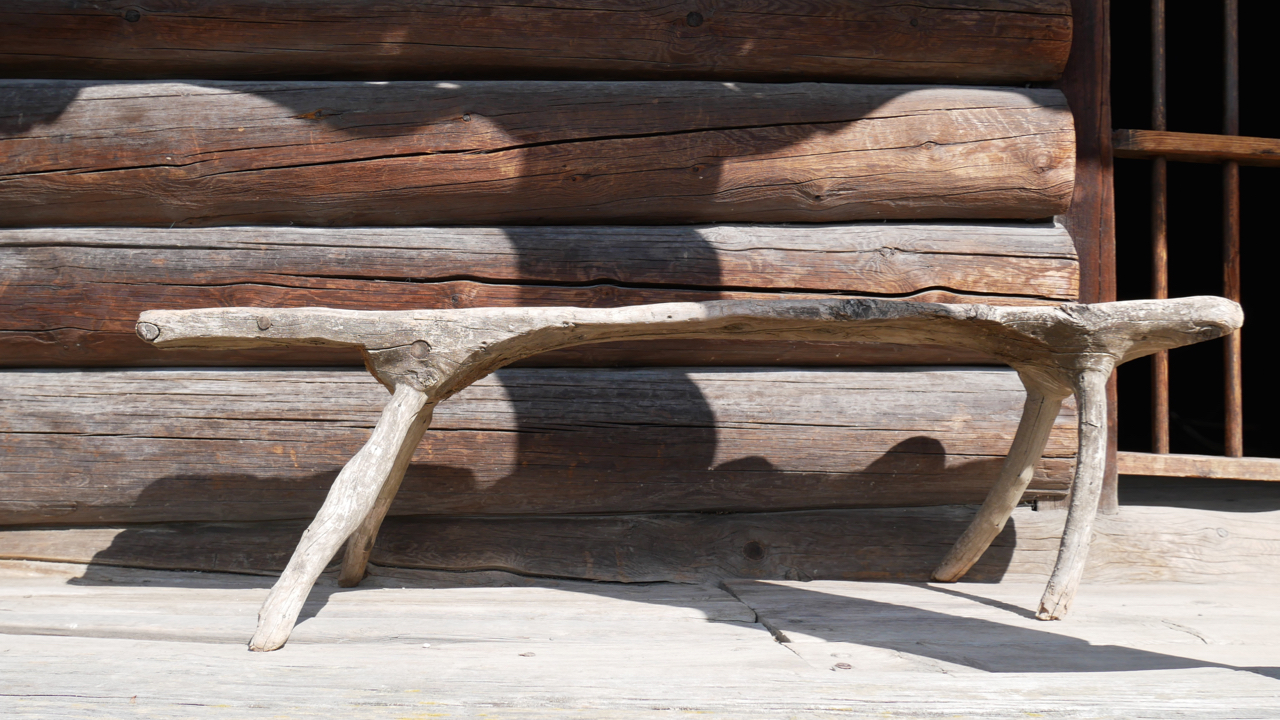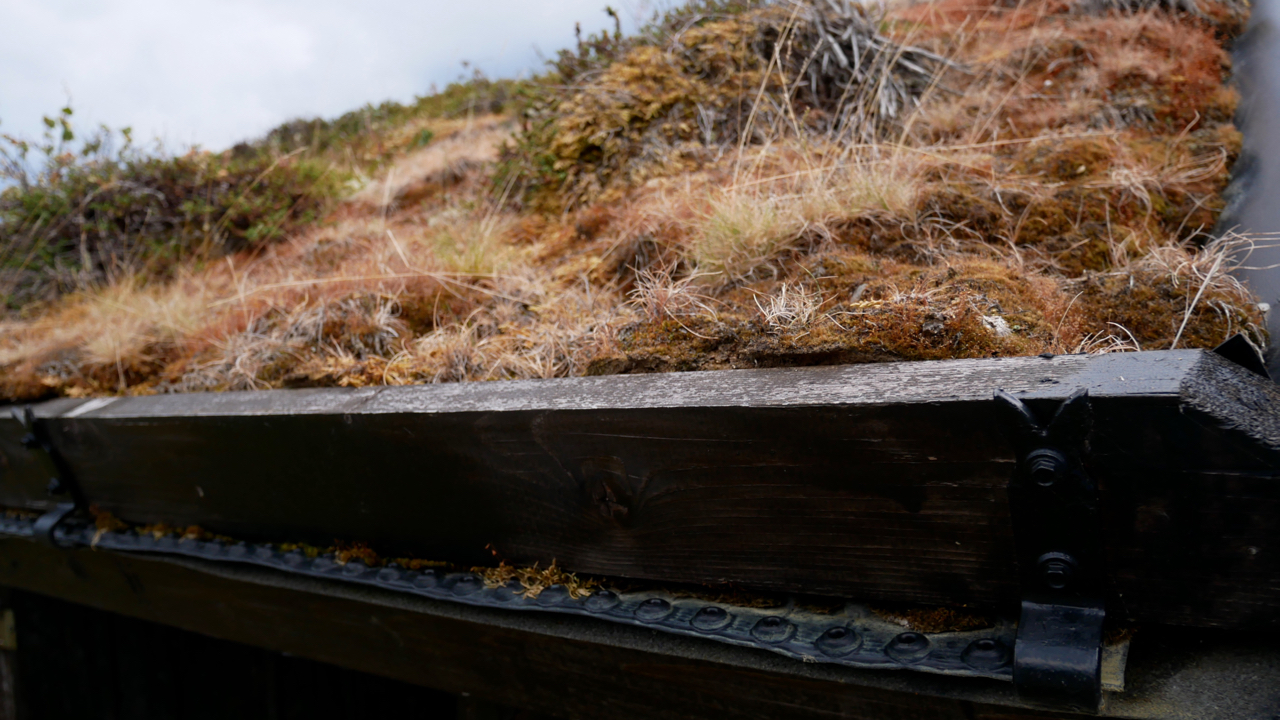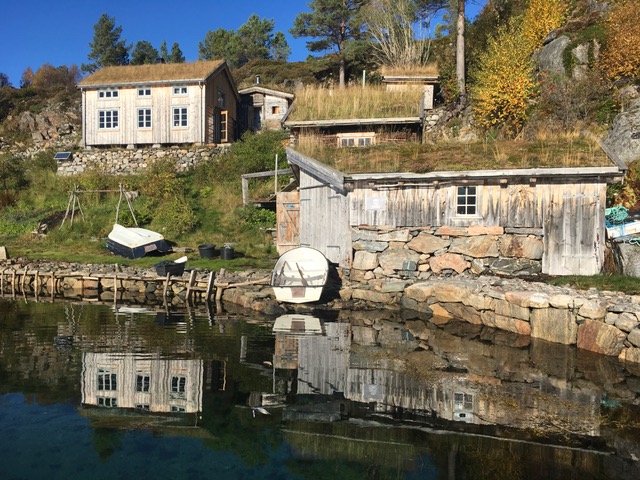Last Sunday I returned to the open-air museum, Maihuagen, in Lillehammer, Norway and got to take in the architecture of Norwegian farmsteads from the middle ages to the 19th century. It was amazing to see how people turned trees into so many things needed for survival as well as comfort.
Full scribe log cabins, timber-framed churches, wooden boats, wall hooks, woven baskets, horse harnesses, furniture, candle stick holders, gutters, food storage, rope and the list goes on.
It was my first time getting to see so many sod roofs or the more apt name, birch bark roofs. They are a rich nature-sandwich of wooden planks, birch bark, stones, dirt, moss and grasses. The birch bark is the key element because it's waterproof and the sod simply helps to weigh it down.
Close up of a medieval-era birch bark roof on a farmhouse.
Apparently birch bark roofs were very common up until the 18th century in Norway, and many still dot the countryside. The roofs have a lifespan of about 30 years and were typically a community effort to rebuild. They had many examples of old farmsteads at the museum, many of which were collected in the late 1800s and rebuilt under the leadership of a preservation-oriented dentist, Anders Sandvig.
After visiting the museum I went back to my Couchsurfing host's home on a mountain outside of the town. Once dinner was finished I thought I'd head to bed early, but instead my host's cousin suggested we go on a joyride in to see the sites of the area. So he cleared out his red Toyota work van and we hopped in. It was a treat.
An hour into the drive his cousin asked, "would you like to see some vacation homes that are interesting? It's an extra thirty minutes." I thought we might as well skip it but I'm glad he decided to show us. He brought us to a vacation cabin, or hytte, development that has sprouted up in the past four years and filled up a mountainside outside of the city. He's a carpenter and worked on some of the houses. We had to pay a toll in order to go up the private road.
Although it felt remote and wild, like a road I might find myself on in Cook County, Minnesota, it led to a tiny village of recently built homes, all painted black with sod roofs, grass waving in the air.
Checking out the hytte sheds.
It was a little surreal and eerie. With dark clouds in the sky and empty buildings, I couldn't help but think of Scandinavian murder mysteries. It was Sunday night so all the weekenders had already left - all you could hear were the clanging of sheep bells and the wind in the pines.
One of many new hytte developments on the mountainside.
The sturdy Toyota work van and one of the hytte.
I knew there were still sod roofs on old farms in Norway but I didn't realize there was a total revival thanks to vacation homes. The roofs look almost identical to their medieval counterpart - but there's no birch bark involved. Instead it's a sandwich of vinyl, a dimpled plastic membrane, sod and seeds. Not as romantic or green as the traditional method but I understand the desire for a more stable option that echoes tradition. I wonder what the environmental impact is of this modern method and how it compares to the traditional approach on a mass scale.
Close up of a modern sod roof.
Upon arriving in Trondheim, a city 5 hours north of Lillehammer, I got to learn about another style of vacation hytte. I've been staying with sculptor Erlend Leirdal, and he told me his hytte also has a sod roof with a synthetic water barrier, but instead of being part of a big development, it's made of reclaimed log cabin materials and on a small remote island. He told me that there is not enough birch bark in Norway to meet the demand of the sod roofs, and if you imported birch bark it would be cost prohibitive. His modern sod roof will last 60+ years. He spends 6 weeks straight there in the summer and additional weeks throughout the year with his family. There's no electricity and they use a well for water.
Erlend Leirdal & his family's hytte.
I would love to see more of these types of hytte popping up in my neck of the woods too.











